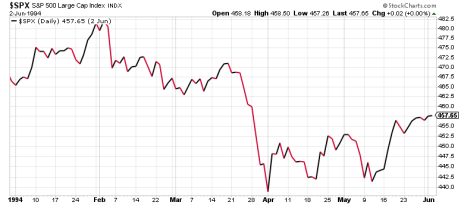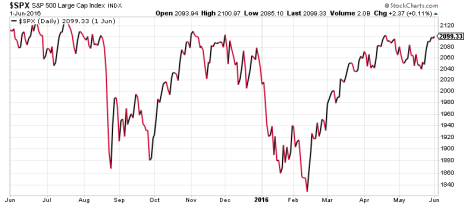The Yuan is at a Decade-Low, and U.S. Investors are Spooked. It Isn’t the First Time.
It’s been clear for more than a year that stocks don’t like the U.S.-China trade war. But the latest wrinkle in the ongoing feud between the world’s two biggest superpowers—China’s yuan weakening to worse than 7 against the U.S. dollar (i.e. one U.S. dollar is equivalent to more than 7 yuan) and President Trump’s ensuing accusations of “currency manipulation”—resulted in a particularly steep decline in U.S. stocks on Monday. It isn’t the first time that’s happened.
U.S. markets have a history of precipitous drops when the yuan—manipulated or not—is this cheap. It hasn’t happened in more than a decade. The last time the yuan was at 7 against the dollar was in March 2008 during the global financial crisis and with stocks around the world plummeting.
Prior to that, however, the yuan was at 7 against the dollar for 14 years—including more than a decade at 8! Obviously, U.S. stocks didn’t struggle for the entirety of those 14 years (though Chinese stocks gained some serious ground). But when the value of the yuan “suddenly” plummeted from 5.8 against the dollar to 8.7 against the dollar January 1994, U.S. investors didn’t react well.
Here’s what happened in the six months that followed:
The S&P tumbled as much as 6% in the ensuing weeks. For the year, the index was down 1.5% in 1994—the first time it had fallen since 1990—while the broad market fared much worse.
China didn’t weaken its currency any further for years, taking nearly a decade and a half for the yuan to get back below 7 versus the dollar. In fact, it took two full decades for China to depress its currency again, in January 2014, and that devaluation was fairly benign. However, in mid-2015, the value of the yuan started to drop more sharply, and by the end of 2016 it was back at the doorstep of 7.
Here’s what U.S. stocks did for the first year of that devaluation in the yuan, when it went from 6.20 against the dollar to 6.60:
They fell. They rallied in the second half of 2016 despite China’s continued devaluing of the yuan, though much of that rally came after the Presidential election in November of that year. In the nearly two and a half years since Trump’s inauguration, the yuan had yet to fall below its December 2016 nadir. Until now.
The correlation between a falling yuan and a declining U.S. stock market certainly isn’t exact. But it’s clear U.S. investors don’t react well when China devalues its currency—and especially not now, when trade war tensions are already heightened.
Throw in the fact that U.S. stocks were already looking a bit frothy, trading at all-time highs after the huge run-up through the first seven months of this year, and the yuan falling to a decade-low against the dollar was just the thing to push the market over the edge.
That doesn’t mean it can’t recover and be at new highs by year-end. But it does mean we’re likely in for at least a couple bumpy weeks, if not longer.
[author_ad]


